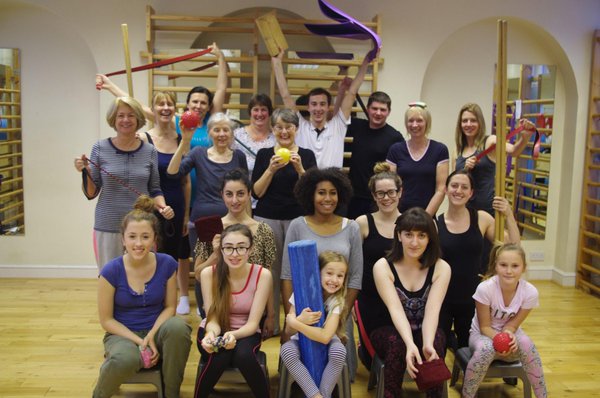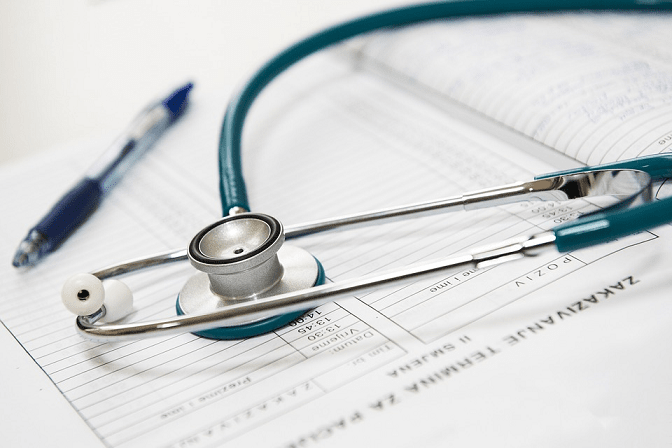Lumbar scoliosis refers to the sideways curving of the lower back, known as the lumbar area of the spine. While this form of curvature can be linked with congenital scoliosis at birth, and may also occur as a result of a neuromuscular condition in adulthood, it is most commonly identified in patients with idiopathic scoliosis.
Lumbar scoliosis can be visually identified using an X-ray or Adam's forward-bend test, and is characterised by the distinctive 'C' shaped curve in the lower section of the spine and the apex of the curve has to be one of the lumbar vertebra. It differs from thoracolumbar scoliosis, which is when a single curve spans between the bottom few vertebrae of the thoracic spine and the top few vertebrae of the lumbar spine and the apex of a thoracolumbar curve has to be at either T12 (twelfth thoracic vertebra) or L1 (first lumbar vertebra). A lumbar scoliosis can occur in combination with a thoracic scoliosis to form an 'S' shaped curve, with the thoracic curve going in one direction (left or right) and the lumbar curve going in the other (right or left).
In most cases, symptoms of lumbar scoliosis will be distinguished during early to mid childhood, although in cases of adult degenerative scoliosis, it can also be linked with a number of corresponding conditions, including lumbar spinal stenosis and osteoporosis.
Some visual symptoms of lumbar scoliosis include:
- Uneven shoulders
- Unusually raised hips
- Uneven rib cage alignment
- Uneven waist
- Body leaning to one side
How is Lumbar Scoliosis Treated?
The recommended treatment for lumbar scoliosis may vary depending on a variety of factors, from the age and health of the patient, to the severity of the spinal curve, and its long-term implications. For those who experience pain and inflammation as a result of lumbar scoliosis, anti-inflammatory drugs such as ibuprofen may be prescribed, in an attempt to reduce discomfort for the patient. In other cases, doctors may recommend a course of corticosteroid injections into the spine, which are performed under X-ray, and can be received no more than four times in a 6-12 month period.
In the most severe cases, where the curvature is seen as being likely to progress, and may impact the patient's overall health and wellbeing, a doctor will often recommend that the patient undergoes a corrective surgical procedure. This is known as spinal fusion surgery, and involves the insertion of rods and screws into the backbones, which prevents the spine from curving.
Are There Viable Alternatives to Drugs and Surgery for Lumbar Scoliosis?
An increasingly popular method for treating scoliosis, is the use of physical therapy and exercises, which is the treatment approach that we employ here at
Scoliosis SOS. Performing a variety of movements, a physical therapist will work to correct the existing spinal curve and strengthen the patient's back muscles, for continued maintenance and progress. Those who enrol on our
ScolioGold programme, will receive a treatment plan that is tailored specifically to their condition, with an at-home exercise routine to complete once they have concluded their treatment.
For more information about how we can treat patients with lumbar scoliosis, please feel free to get in touch today! You can contact the Scoliosis SOS team by calling 0207 488 4428, or by filling in our contact form.
Scoliosis (and its symptoms, such as chronic pain and reduced mobility) can have a huge impact on the lives of those affected by it. However, as many scoliosis sufferers will no doubt agree, it can make a huge difference simply to speak to other people who are suffering from the same condition.

With that in mind, here is a list of
scoliosis support groups (both online and offline) around the world. We will be updating this list periodically, so if you run or know of a scoliosis support group in your territory, please let us know via Twitter (
@ScoliosisSOS) and we will consider expanding our list accordingly.
Scoliosis Association (UK)
SAUK is a nationwide support organisation for scoliosis sufferers in the United Kingdom (and their families). They provide advice and information on the condition, and aim to raise awareness both within the healthcare industry and amongst the general public. Their helpline (see number above) is manned from 9am to 5.30pm every weekday, and it allows people to phone up and receive friendly guidance and support instantly.
National Scoliosis Foundation
Headquarterered in Massachusetts, the NSF is a nonprofit organisation that aims to help "children, parents, adults, and healthcare providers to understand the complexities of spinal deformities such as scoliosis." They offer numerous different types of support, including early screening programmes, advocacy / awareness initiatives, and numerous informative resources for scoliosis sufferers and their loved ones.
Curvy Girls
- Locations: Australia, Canada, Guyana, Hong Kong, Ireland, Israel, Kenya, Lebanon, Mexico, Morocco, Peru, South Africa, Sweden, Turkey, UAE, UK, USA
- Website: www.curvygirlsscoliosis.com
- Social Media: Facebook // Twitter // Instagram
Curvy Girls was founded in 2006 by a young scoliosis sufferer named Leah. It began as a small support group specifically aimed at children and young people with scoliosis, and it has now grown into an international success, with groups currently meeting in a dozen different countries on six continents across the globe (see list above).
Vereniging van scoliosepatiënten
This Dutch-language website (roughly translated, the name means 'Association of Scoliosis Patients') hosts a wide array of informative resources for scoliosis sufferers, as well as a forum where Dutch-speaking scoliosis patients can interact with and support each other.
Beyond A Curved Spine
Beyond A Curved Spine is a "scoliosis awareness hub" based in Lagos, Nigeria. They aim to raise awareness of the condition while also providing financial and emotional support to scoliosis patients who need it.
SupportGroups.com
SupportGroups.com is a website that houses online support groups (forums) for a wide range of different conditions and life events, from depression and eating disorders to divorce, alcoholism, PTSD and more. Their dedicated scoliosis group is 17,800 members strong at time of writing, and the forum's open style encourages users to share their feelings and offer support and a friendly ear to fellow scoliotics.

In many mild cases of scoliosis (i.e. where the patient's spinal curve is unlikely to progress to an extent that will cause major changes in their appearance or respiratory health), spinal fusion surgery will not be recommended. For those with a severe curve (45-50 degrees or more), surgery is usually recommended - particularly if the patient is a child, as their scoliosis will likely increase as they grow. Scoliosis surgery is also recommended to those whose curves have progressed rapidly over a period of monitoring their condition, as it can prevent further progression and health complications.
While spinal fusion surgery is an effective treatment for some patients - and may be the only viable option for those with severe scoliosis - it is important to consider your full range of options before undergoing this procedure. You should also take time to consider any possible risks or complications of undergoing scoliosis surgery, as is advised before any major operation.
Risks to consider before undergoing spinal fusion surgery
- Back Pain - In some cases, patients will continue to experience back pain even after undergoing spinal fusion surgery, due to what is sometimes referred to as 'failed back surgery syndrome'. While the surgery itself may have been a success, this does not necessarily mean that the patient will experience a full resolution of their pre-op symptoms.
- Failure of Fusion - This occurs when the bone grafts used to complete the operation fail to fuse into solid bone, which can be caused by excessive movement, poor placement of screws and rods, or even the use of anti-inflammatory medication. This can sometimes lead to failure of implants, which can cause breaks, pullouts and chronic pain. If there is no pain and the curve seems to be stable, a broken rod may not be removed.
- Neurological Complications - Some complaints which may occur soon after surgery include a loss of skin sensation, loss of strength in feet and legs, loss of bowel and bladder control, and in very severe cases, paralysis. These changes can be temporary or permanent and only occur in a very small number of cases, particularly in their most serious form.
The paper Neurological complications in adult spinal deformity surgery states: "Surgery of the lumbar spine for ASD has a neurologic complication rate between 0.5 and 17% and is dependent upon approach (anterior, lateral, or posterior), number of fusion levels [and] case complexity."
This means that the more severe or complex your scoliosis curvature is, the higher the chance that you will experience some neurological complications following spinal fusion surgery.
Other possible surgery risks include:
- Infection
- Self-image (due to scarring)
- Osteoarthritis
- Limited range of motion/flexibility
Is it possible to avoid these risks and complications?
If you are particularly concerned about the potential risks and limitations posed by surgery, it may be possible to eliminate the need for this procedure by reducing your spinal curvature through non-surgical techniques. Here at the Scoliosis SOS Clinic, we have treated a huge number of spinal surgery candidates who came to us in an effort to avoid spinal fusion.
Using our ScolioGold treatment programme (which combines a selection of established non-surgical techniques), we have managed to not only reduce the Cobb angle of our patients, but also provide them with a lasting method to manage the symptoms of their scoliosis.
Post-spinal fusion surgery
We also treat many patients who have already undergone spinal fusion surgery and are seeking help to recover from the procedure more quickly. For many of our post-op patients, the primary complaint is the level of pain experienced after surgery, which can be successfully reduced using our therapeutic techniques. Another key issue for post-surgery patients is mobility, which can also be improved with the guidance and supervision of our experienced physiotherapists.
Contact Scoliosis SOS to Book a Consultation >>